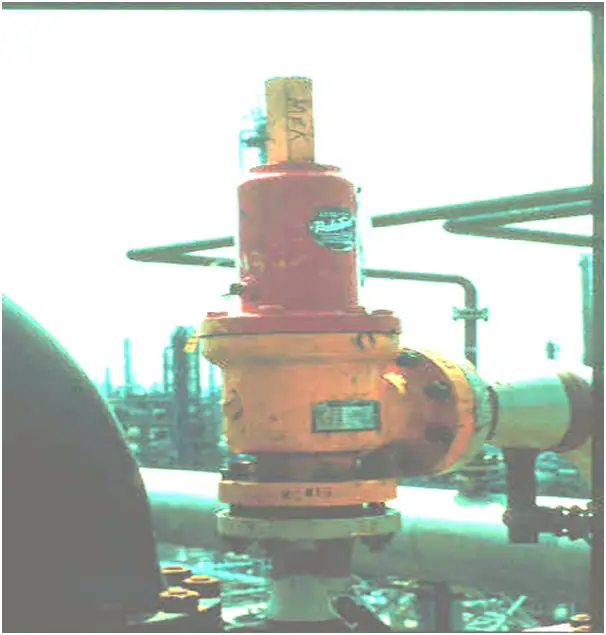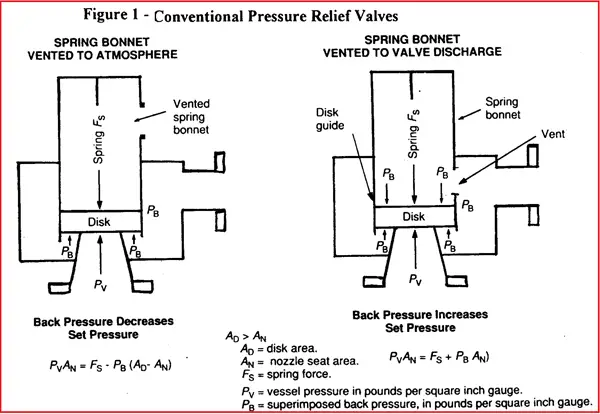Piping Vibration can be defined as a continuous to-and-fro motion from an equilibrium position. Piping vibration problems cause serious integrity risks to operating plants; both onshore and offshore production facilities. The vibration of the Piping System can cause fatigue failure on process piping and small branch connections and reliability problems on equipment. Equipment nozzles, Relief lines, instrumentation ports, drain connections, and valves can also be subjected to Piping Vibration. Data provided by the UK Health & Safety Executive shows that around 21% of hydrocarbon releases are due to vibration-induced fatigue failures.
Due to the fact that most of the piping design codes (ASME B31.3, B31.1, B31.4, B 31.8, etc.) do not address the vibration issues in a detailed fashion, the damaging effect is normally ignored during the design stage and simple static analysis without attention to vibration is performed on piping systems.
At the same time, the piping vibration tendency is increasing to a great extent due to increased flow rates of process industries through pipes and the usage of high-strength thin-walled piping (flexible) material during design. It is seen that Piping Vibration causes many problems in operating plants and the problem should be solved during the design phase. Major of the damaging effects of vibration can be mitigated if proper design philosophy is taken while designing the system. This article highlights the major causes of piping vibration and their effects in short.
There are many reasons which can cause vibration in a piping system.
Cause of Piping Vibration
There are a variety of excitation mechanisms that can be present in a piping system and can produce piping vibration and finally, failure resulting from fatigue. Some of those causes are listed below:
- Flow-induced Vibration: Caused by the turbulence of the flowing fluid.
- Mechanical forces from Equipment: Caused by the excitation forces of reciprocating and rotary equipment like pumps, compressors, etc.
- Pressure Pulsations from reciprocating equipment.
- High-frequency Acoustic excitations are generated by high-pressure drops at relief valves, control valves, or orifice plates.
- Water Hammer (Pressure Surge) or Momentum changes due to sudden valve closure.
- Cavitation or vapor bubble collapse due to localized pressure drop.
- Due to the sudden flashing of fluid.
- Periodic pressure disturbances during a flow past the dead-end of branch connection/ instrumental items.
Effects of Piping Vibration
Data has shown that out of all failures and downtimes in any individual plant around 10-15% are because of vibration-induced fatigue. The major effects of piping vibration are as follows:
- Piping Vibration causes dynamic stresses (fatigue) in a piping system. If this stress is more than the critical value it will initiate a crack that will propagate slowly and end in the failure of the item in concern. The more fatigue-sensitive places are the weld point connections where the branch and header are joined together.
- In addition to dynamic stresses, vibration results in wearing surfaces in contact due to cyclical relative motion between them. This phenomenon is known as Fretting.
The vibration of plant piping is a significant risk to asset integrity and safety. So, must be addressed. To manage the risk of piping vibration, various analysis and measurement services are performed.
Every piping system has the tendency to vibrate at certain frequencies, called natural frequencies. Every natural frequency is associated with a definite and unique shape, called a mode shape. The natural frequencies and modes depend on the distribution of mass and stiffness throughout the piping system, and the distribution is influenced by piping diameter, material properties, wall thickness, location of lumped masses (such as valves), piping supports, and fluid density.
A mode shape has the locations of zero motion (node) and maximum motion (anti-nodes). The response of the piping to an applied excitation depends on the relationship between the frequency and pattern of the excitation and the piping system’s natural frequencies/modes.
When a piping system is excited by a dynamic excitation with a frequency that coincides with one of its natural frequencies, the system undergoes great displacements and stresses. This phenomenon is known as resonance, and it can cause high vibration, even fatigue, and subsequently, failure. Vibration generated in the piping work may lead to high-cycle fatigue of components, such as small-bore connections, or the failure at welds in the main piping itself.
Vibration Problems Due to Two-Phase Flow
Two-phase flow refers to the interactive flow of two distinct phases with common interfaces in a piping system, with each phase representing a mass or volume of matter. The two phases can exist as combinations of solid, gas, and/or liquid phases. Although multiphase flow involving three phases can also exist, most multiphase engineering applications are two-phase flows.
Two-phase flow exists in many process piping and power piping components. The flowing fluid is a source of energy that can induce small-amplitude subcritical oscillations and large-amplitude dynamic instabilities. In fact, many practical system components have experienced excessive flow-induced vibrations. To prevent unacceptable flow-induced vibration, Users must understand excitation mechanisms, develop analytical and experimental techniques, and provide reliable design guidelines.
How to Reduce Pipe Vibration?
There are a number of ways that can be implemented to reduce pipe vibration. Some of the common ways to reduce pipe and pipeline vibration at operating plants are outlined below:
Support Addition:
Adding pipe supports makes the pipe or pipeline system stiffer which increases the pipe’s natural frequency. Small forces can not easily vibrate a stiff or rigid piping system. The addition of guides, line stops, and hold-down supports in most situations arrest the piping vibration. If guide and line stops have sufficient gaps, tightening up those clearances will also provide a nice effect on pipeline vibration elimination. In reciprocating systems, the support span is reduced to lower values than the standard pipe spacing. Note that, adding support will make the pipe system more rigid. So, It is always suggested to check the thermal stress after the addition of new pipe supports. To reduce/eliminate piping vibration, it is a general practice to keep the natural frequency of the piping system in excess of 4 Hz.
Adding Vibration Damping to the Main Piping:
Installing vibration dampeners in the main pipe near the vibration source can easily dampen the pipe vibration. In highly critical systems, many a time hydraulic cylinders and dynamic dampers are installed to reduce pipe vibration.
Adding viscous dampers or sway braces is a good solution to dampen the pipe vibration while allowing the required thermal movement.
Adding reinforcement to vents, drains, and small bore pipe connections:
To increase the stiffness of small bore pipe connections, thicker wall pipes are used. Most of the time, reinforcement by adding bracing from the main piping system reduces the vibration in small bore pipe connections.
Supporting Rigid Bodies (Valves):
Heavy rigid objects like valves, flanges, or other items must be independently supported to reduce the potential of vibration of those elements.
Increase Pipe Size:
Sometimes if the flow velocity is very high, pipe size can be increased to reduce the vibration possibility due to flow-induced vibration. The same must be discussed with the concerned process engineer for hydraulic recalculation and confirmation. Flow smoothening can also be tried to convert turbulence flow into a smooth flow which in turn will reduce the vibration tendency.
Increasing the pipe wall thickness increases the pipe rigidity which in turn reduces the vibration possibility of the pipe.
Piping Vibration due to Seismic Event:
Snubbers are used in piping systems to reduce the vibration generated due to seismic events.
Acoustic Silencers:
To reduce the vibration generated due to acoustic-induced vibration, acoustic silencers can be used. Sometimes, using multi-stage pressure reduction inside the orifice or pressure control valves proves to be beneficial in piping vibration reduction.
Isolation of Vibration Source:
Isolating the vibration source from the pipework is an effective method to control pipe vibration. Expansion bellows, PTFE pads, Anti-vibration mounts, etc can be used to isolate the piping system from the vibrating source.
Reducing Vibration due to Pulsating equipment:
To prevent the occurrence of resonance, the piping natural frequency is kept +/-20% away from the pulsating equipment frequency. Pulsation bottles are widely used for reciprocating devices to reduce the pipe vibration potential.
Changing Pipe/Pipeline Routing:
Minimizing bends and avoiding abrupt directional changes reduces the dynamic pressure reaction which in turn reduces pipeline vibration tendency.
Pipe Vibration due to Surge:
To reduce the piping vibration due to surge/ water hammer, the rapid changes in fluid velocity must be prevented. Use of soft start pumps, increasing valve opening/ closing time, using surge pressure relief valves, Surge arrestors, etc can be beneficial.
Piping Vibration Standards
Piping vibration standards are guidelines or specifications that establish limits and criteria for acceptable levels of vibration in industrial piping systems. Excessive vibration in piping systems can cause damage, failure, or reduced operational efficiency, which can lead to safety hazards, downtime, and costly repairs. So, there are several piping vibration standards that address the issue of piping vibration and provide certain guidelines. Some of the common vibration standards are:
- Guidance for the Avoidance of Vibration-Induced Fatigue Failure in Process Pipework by Energy Institute
- ASME OM-3: This Standard provides general requirements for the assessment of piping system vibration for nuclear power plants.
- VDI 3842: Vibrations in piping systems
- ISO 10816-3: Mechanical vibration – Evaluation of machine vibration by measurements on non-rotating parts.
- ISO 17.160: Vibrations, shock, and vibration measurements.
- ISO 2017: Mechanical vibration and shock
- ISO 2041: Mechanical vibration, shock, and condition monitoring
- ASTM D999: Product Vibration Testing
- NUREG-1061
- IEC 60068
- Gost PTM 38.001
- API 618: Reciprocating Compressors for Petroleum, Chemical, and Gas Industry Services: This standard provides guidelines for the design and installation of reciprocating compressors, including requirements for minimizing vibration.
- API 610
- ASME B31.3: Process Piping: This standard provides guidelines for the design, fabrication, installation, inspection, and testing of process piping systems, including requirements for vibration control.
- EEMUA 145: Vibration of pipework: A guide to the design and protection of pipework against vibration and fatigue: This standard provides guidance on the design and protection of pipework against vibration and fatigue.
These standards provide criteria for vibration levels, methods for measuring and analyzing vibration, and recommendations for mitigating excessive vibration. Compliance with these standards can help ensure the safe and reliable operation of piping systems.
Piping Vibration Severity Chart
A piping vibration severity chart is a tool used to assess the severity of vibration in piping systems. It provides a graphical representation of the vibration level in relation to established standards or criteria, such as those outlined in the piping vibration standards mentioned in my previous answer.
The chart typically plots the measured vibration amplitude (usually in units of millimeters per second or inches per second) on the vertical axis and the frequency of the vibration (usually in Hertz) on the horizontal axis. The chart may also include different colored zones or bands that indicate different levels of severity, ranging from acceptable to potentially damaging or unsafe.
By comparing the measured vibration amplitude and frequency to the severity chart, engineers can quickly determine whether the vibration is within acceptable limits or requires further investigation and corrective action. This can help prevent equipment damage, reduce maintenance costs, and improve safety and reliability in piping systems.
It is important to note that different standards may have different severity charts, so it is important to refer to the appropriate standard when interpreting vibration data using a severity chart.
Video Tutorial on Solving Vibration Problem Due to two-phase flow
In this video collection presented by the Dynaflow research group, the basics of vibration because of two-phase flow, are clarified by the presenter. I hope, most of you will get a good insight to solve the two-phase vibration problems. If you wish to add something more please write in the comments section.
Few more Useful Resources for you.
Vibration Related
Pump Related
Piping Design and Layout Basics
Heat Exchanger Related
Vessel Related









It’s good to know that pipe vibration can be caused by turbulence in the liquid flowing through the pipe. My brother has been telling me about his pipes have been vibration, and he’s wondering why it’s happening. I’ll pass this information along to him so that he knows this, and so that he can look further into his options for getting some pip hangers installed to stop the vibrations.
Thank you!!!
Can you let me know how to approach this proble.
At what distances the support should be provided for 1″ & 1/2″ pipe carrying fluid at 25kg/cm^2(g) to reduce piping vibration??
Hi, this is a very interesting topic.
According to my last investigation, (my thesis)
What I did, is to perform a Modal simulation in comsol, after this, I observe de nodal points, (At certainly frequency FIV) to determine de ideal clamps position
Hi, Could you please share more on your thesis?
It would be a great help if you connect at
linkedin.com/in/baskar-nandhakumar-95690472
OR
baskar1118@gmail.com
Thanks in advance
Nice and informarive article.
Please note that not all two phase flows will create problems. Only a few types of two phase flow only creates dynamic forces.
Thanks
I need your support for our ongoing HPCL project.
It’s really helpful. I am very lucky that we are connected. Hope to work with you in future.